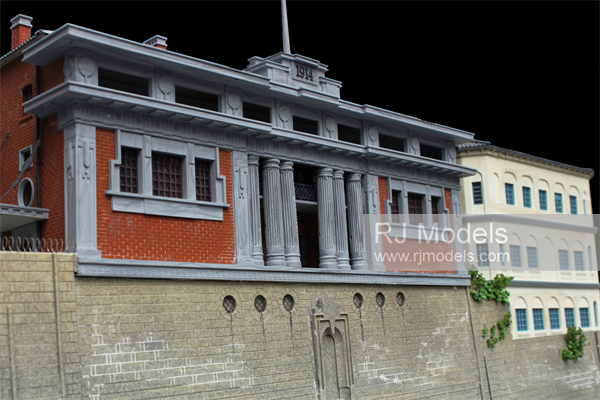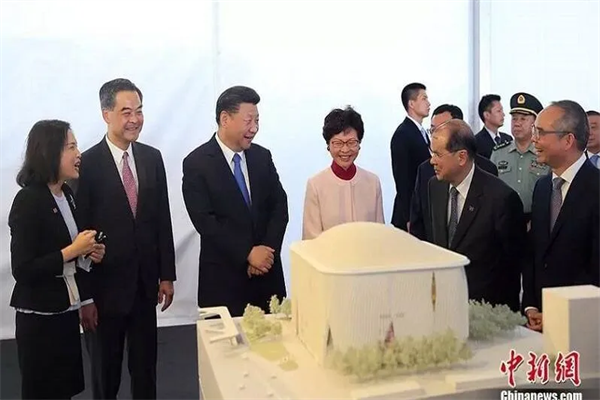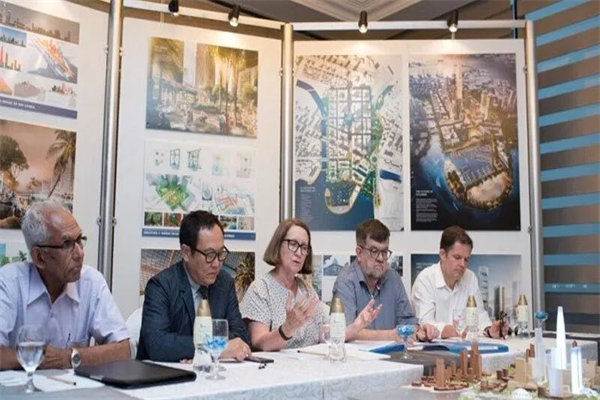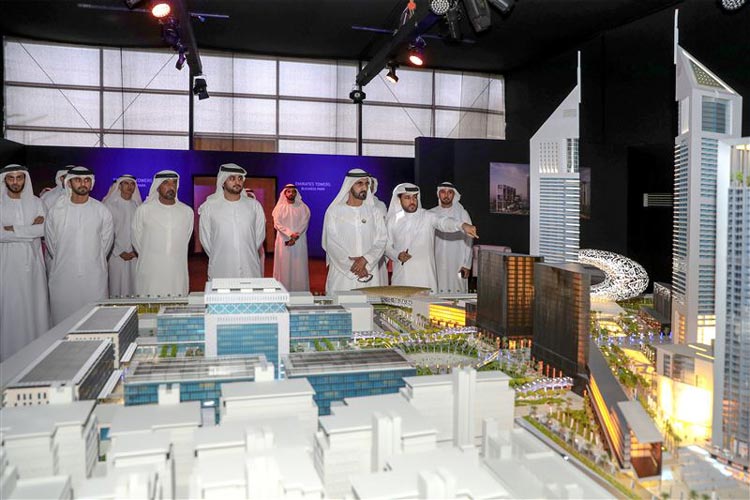Introduction
Architectural models will become more fragile with time for a number of reasons.
The main factors are the conditions of the exhibition sites, the natural decay, and the transport of the models.
Architectural model maintenance work is especially vital to ensure that scale models will survive for the enjoyment of future visitors.
If you know the tips of how to transit, display, and storing that will protect the models.
Architectural Model Maintenance
Each architectural model is unique and has its own model maintenance issues.
Before making the model maintenance plan, the following questions need to be taken into consideration.
- What risks the architectural models are exposed to?
- What maintaining practices are in place?
- How often should be the architectural model maintenance?
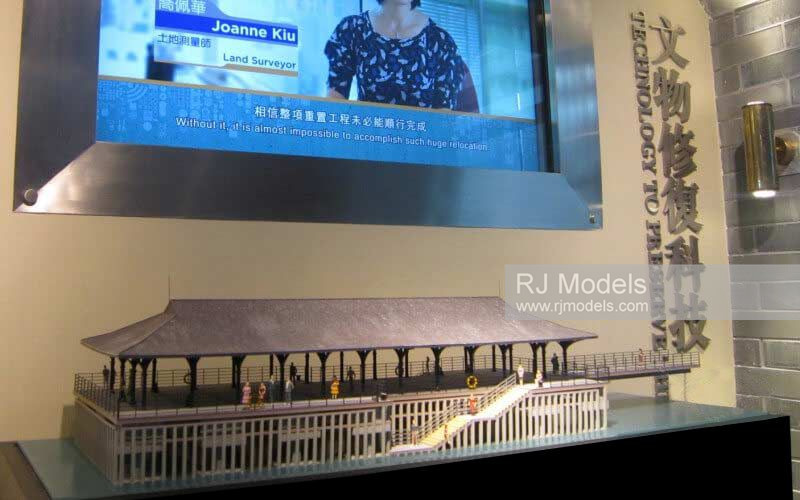
The following sections introduce several model maintenance tips which can help to carry on the model maintenance works.
1. Create a Proper Environment
Keeping architectural models in a consistent and appropriate environment is crucial.
Changes in temperature, pollution, and the humidity of the environment will affect the useful time of models.
And they will cause deformations like the cracking of the rooftops and the bulge of the turfs.
Generally, air ventilation systems, heating equipment, solar radiation, and the number of visitors affect the environment of the exhibit areas.
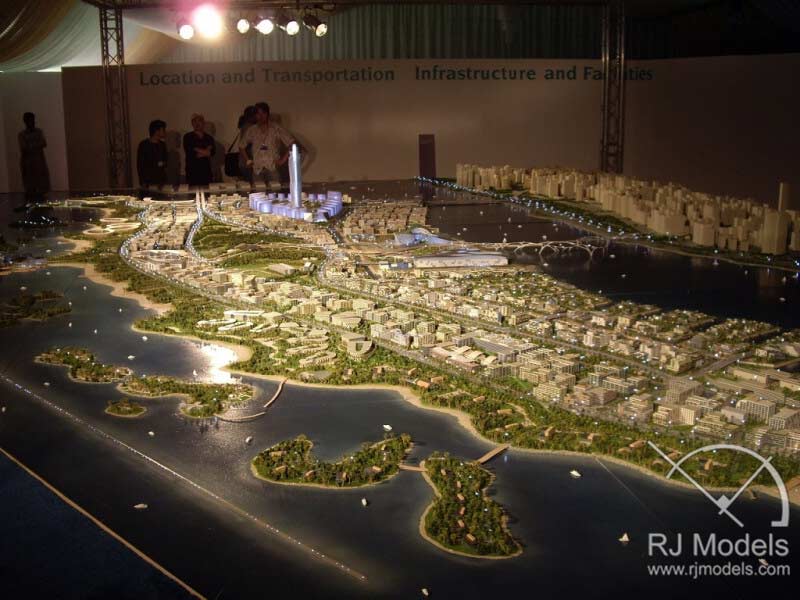
Create a stable and properly controlled environment of the exhibition hall is critical to the long-term maintenance procedure of models.
The following are a few measures that help to set up an ideal environment.
- Assign specialized staff to monitor the exhibit conditions.
- Install humidity control equipment as needed.
An ideal choice is a humidity level of approximately 30–80%.
Because architectural models are made of different materials which can withstand various temperatures.
Steady temperature of around 5 to 35 degrees will be good.
Avoid placing models overexposing them to the sun to reduce the negative effects of high temperatures.
- Apply pollution control systems
Pollutants like particles and gaseous pollutants will harm the models.
It is essential to minimize the models’ exposure to the pollutants.
General housekeeping activities like cleaning the windows, floors, especially the model display stand and showcase can reduce the air pollutants.
Besides, assessing the air quality within the exhibition hall is necessary. And adequate ventilation can lower pollutant concentrations.
It is important to ensure the display area is well ventilated.
You can do it by incorporating air filtration equipment into the exhibit areas.
In addition, using multi-functional sensors for air pollutants is helpful.
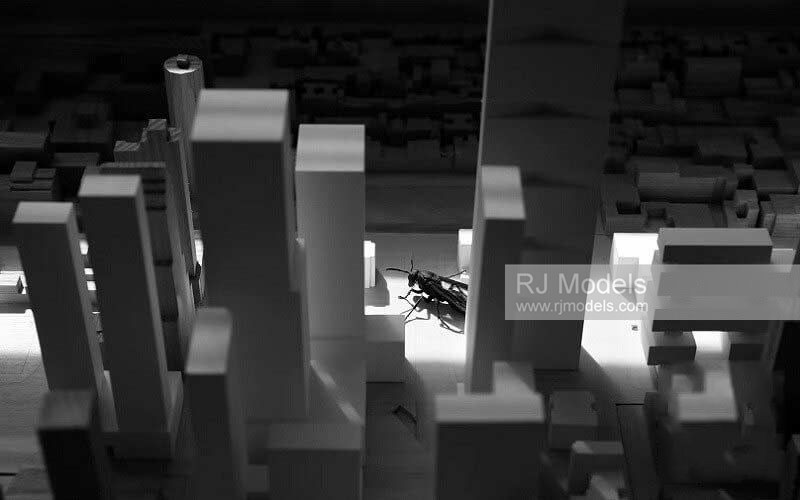
Lastly, Pests can create big trouble for architectural models.
Keep an appropriate temperature, relative humidity levels can reduce pest activity and mold growth.
Moreover, regular and monitoring for pests can discourage insect activities.
2. Install and Monitor Appropriate Lighting
Lights of architectural models can improve the display effect of architectural models.
However, the colors of the surface of the model will fade and change with exposure to light.
So, reducing the harmful effects of visible light, UV light and infrared radiation are important factors.
- UV light is usually coming from fluorescent lamps and natural daylight.
It helps to eliminate the sources of natural light by covering windows with shades.
For fluorescent lights, installing UV filters on the bulbs can help to reduce the amount of UV exposure.
- To reduce the harmful effects, you can turn off the lights of models at least once every 8 hours.
Make sure the lights are off at closing time.
- Also monitor and control the light levels of the models to reduce the negative effect of lights.
- Ventilate the lighting switch box to dissipate heat from light fixtures.
The use of electric fans may be a good choice.
Lights on the architectural models can improve their display effect.
3. Keep the Remote Control Properly
We know that using a remote controls to control interactive architectural models is popular.
To extend the useful life of architectural models, not only the model itself but also the control devices need safekeeping.
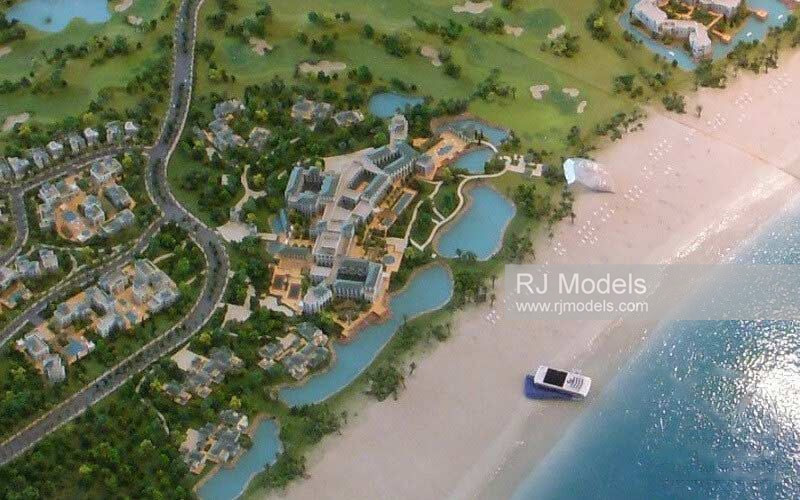
The control devices need safe keeping.
4. Protection Against Visitor Damage
Considering the vulnerability of architectural models, it is necessary to have additional security measures to protect the models.
- Place a notice board in the display area of the model reminding visitors to keep a certain distance away.
- Protect architectural models using protective hardware such as acrylic cover, glass shield, or enclosed glass panels.
- Do not let the children touch the model to avoid electric shocks or damage to the models.
5. Ensure Enough Storage of Spare Materials and Components
As time goes by, architectural models will have superficial damage and broken and loose parts.
In some cases, model items like figures, trees, vehicles, and furniture may be missing from the exhibition.
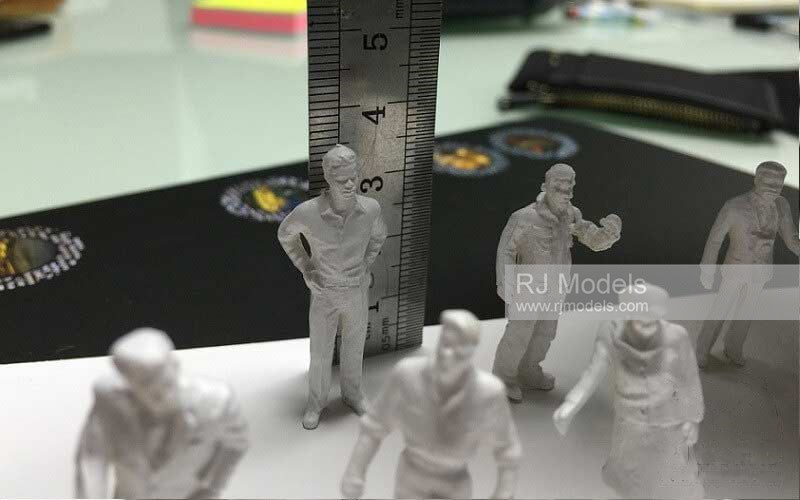
The ideal number of reserves can be 5% of the completed models.
These missing pieces or moving parts may sometimes need replacement.
6. Architectural Model Cleaning
A cleaning job is especially important when architectural projects are taking longer to show the model for a long time.
- Dry clean the architectural model surface.
You can clean the model surface with a clean towel, sponge and soft brushes to removes loose dirt and dust.
- Model makers should clean the architectural models without a glass cover regularly.
A specialized dusting machine and a vacuum cleaner are in needed.
- Some parts of architectural models need washing to remove the dust and blemishes. In this case, a mild detergent will be an ideal choice.
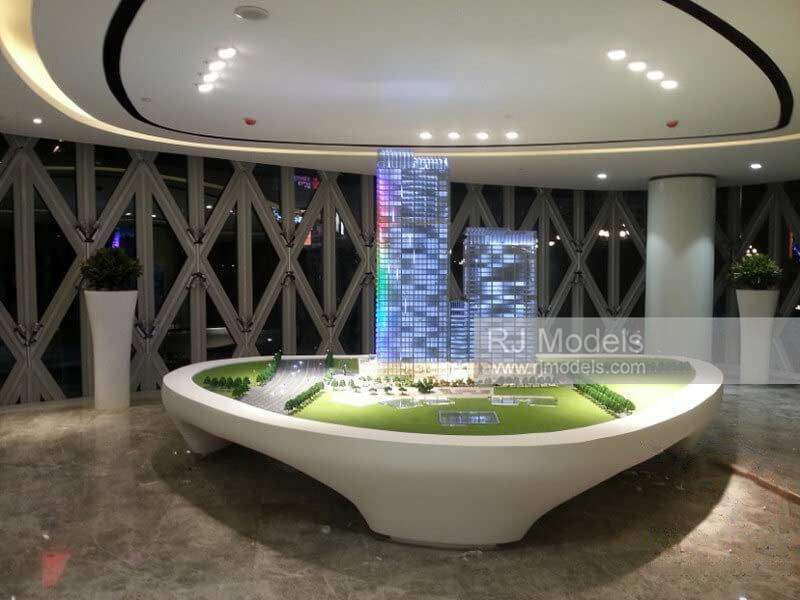 It is not simple to keep an architectural model dust-free.
It is not simple to keep an architectural model dust-free.
7. Architectural Model Conservation
An architectural model needs proper conservation so that the models will remain in good condition for future exhibitions.
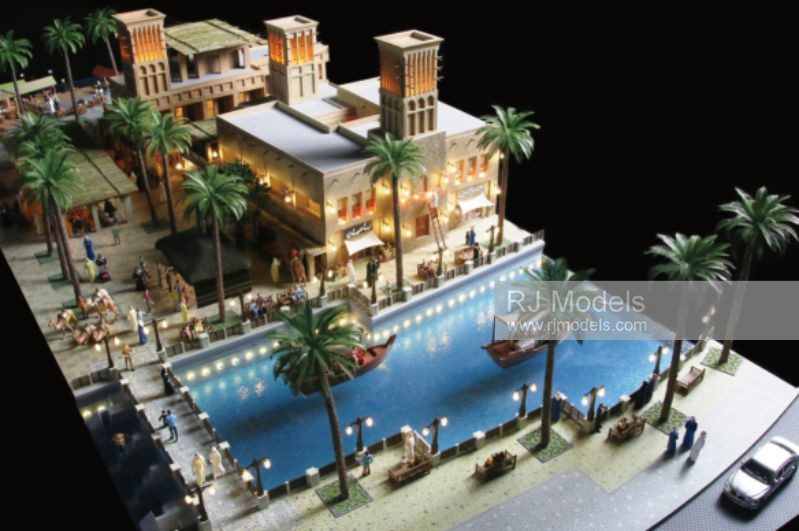
And under some circumstances, model makers need to collect the architectural models as important exhibition collections.
Thus, the following are some architectural model conservation techniques that may ensure the desired safety and stability of the models.
8. Create a Suitable Storage Environment
The model storage area should be separate from the exhibit or working areas.
And model maker should use it only to house architectural models.
This area should have a constant environment where temperature and humidity levels are kept at recommended levels.
9. Select an Appropriate Storage Measure
An architectural model which requires long time conservation can be covered with acrylic or glass with an airtight seal.
These storage units should be able to protect the models from sun fading, water damage, pollutants accumulation, and insect damage.
For models that only need temporary preservation or models that cannot have a physical cover.
A good choice could be the use of tissue paper, plastic film, or fabric to cover them.
Moreover, model makers should keep in mind is that, these covers need to be washed regularly.
10. Choose a Suitable Storage Location
Avoid placing architectural models on the ground to protect them against unexpected risks like water damage.
Similarly, to avoid external damage, do not put models close to windows, pipelines, mechanical and electrical equipment.
11. Periodically Inspect Architectural Model in Storage
Inspections should be carried on to check the condition of the architectural models.
So this can help timely notice, the signs of deterioration and other damages like insect injury.
12. Architectural Model Repair
Sometimes, architectural model pieces will be missing or continue to deteriorate over time.
The replacement of missing items and repair work helps make sure that the model can survive for a longer time.
In most cases, model-making companies employ a specialist who has vast experience in different fields in the architectural-model repair service.
Missing architectural model items can be remade by traditional hand craftsmanship together with high-tech model-making approaches such as 3D printing.
13. Architectural Model Handling
Architectural models are at risk of damage in transit or though inappropriate handling.
We listed the specialist model packing, handling, and transiting approaches during movement as follows.
- Hire a professional model makging company to transport architectural models.
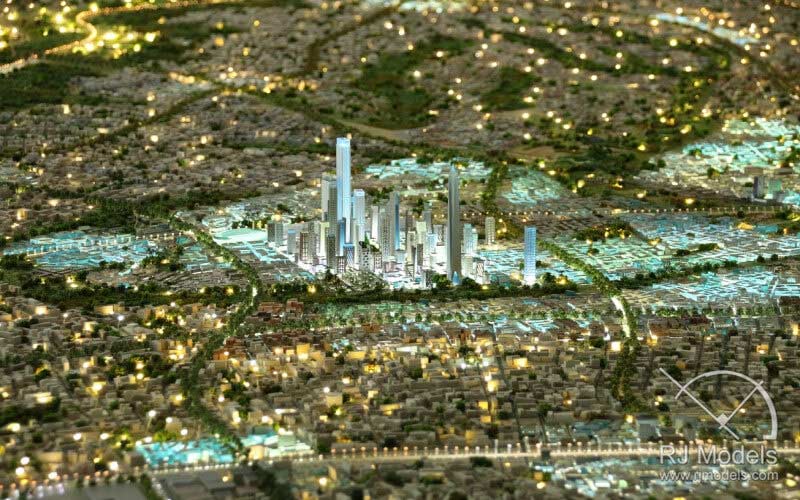
It is important to have a carrier personnel with rich experience in lifting, supporting and handling architectural model.
Sometimes, vehicles equipped with shock absorption, temperature control, and humidity control devices are also in needed.
- Carefully pack the architectural models with suitable materials. Use polystyrene foam, paper, and corrugated cardboard to protect them.
If you need to be ship the model by rail, shock-resistant and sturdy cases that can withstand wide climatic variations.
- Ensure less shock and vibration when handling the architectural models.
- Control damage from handling via physical protections and appropriate handling techniques for architectural models.
For example, model makers can wear gloves to avoid oil from their hands on the surface of the model.
So, using additional assistance or support underneath when handling heavy or large architectural models.
- Choose a proper form of transportation.
Model makers can transited architectural models via air, road and rail, sea according to specific circumstances.
And choose the most appropriate mode of transport to keep the balance between expense and conservation.
For instance, small architectural models can be transited in passenger cars when need to be transited a short distance.
Conclusion
To summarize, it is very important to set up an appropriate maintenance schedule to keep the model in great condition.
The model maintenance measure varies from model to model according to the use and the condition of different architectural models.
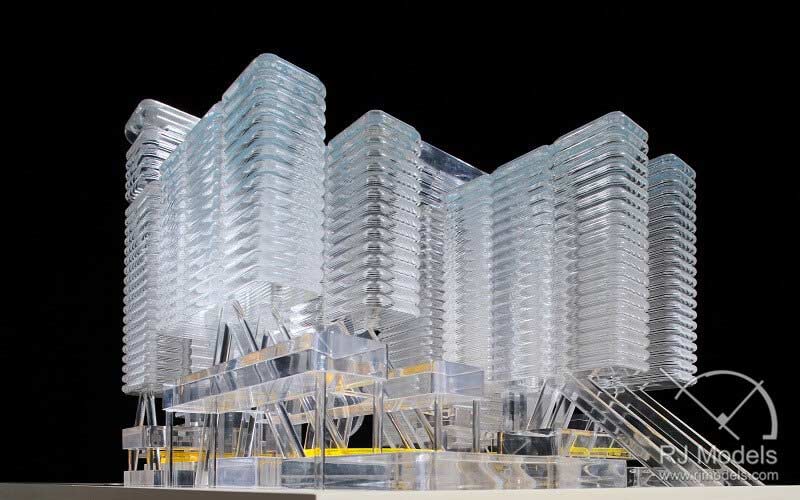
The primary purpose of model maintenance is to ensure that models are stored or displayed in a suitable environment.
So that it will not cause them to deteriorate.
In addition, packing, moving, handling, general awareness of physical care of the architectural models are equally important.

